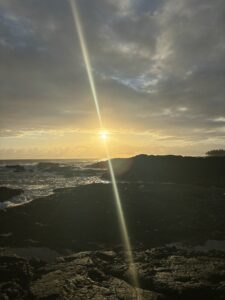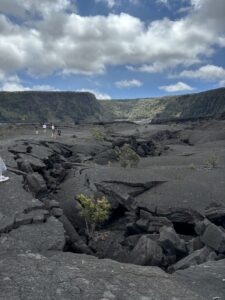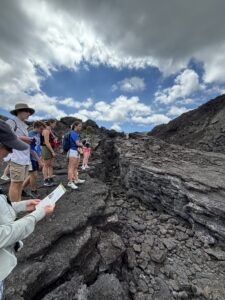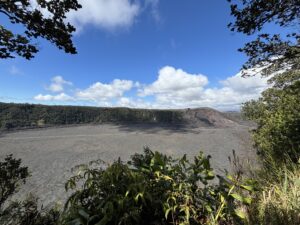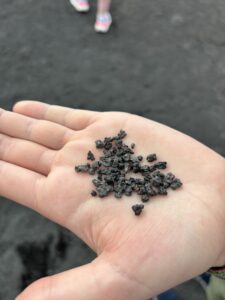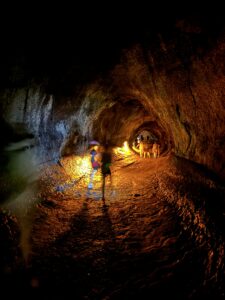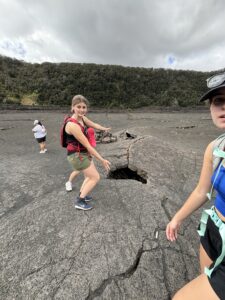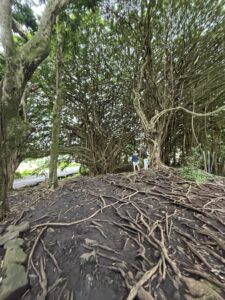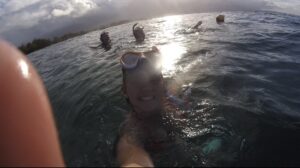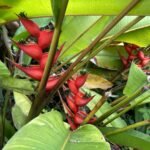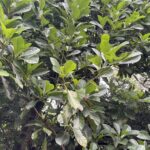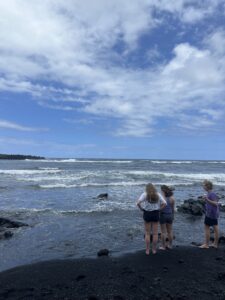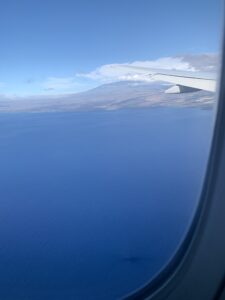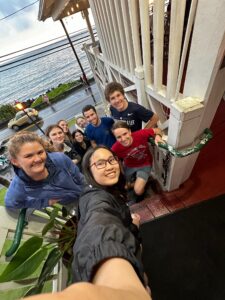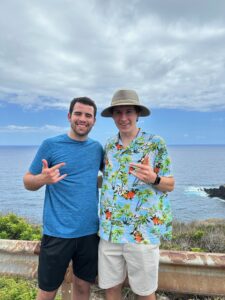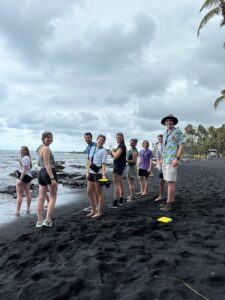Two days ago was our first full day in Hawaii, and it was quite eventful!
Our very first stop was at Kadens Uncles property to learn more about Hawaiian culture, and farming. Coffee farming is slowly taking over the macedonia nut farming in Hawaii, and is becoming more and more profitable. I learned about Kona coffee for the first time! 51% of it now has to be from Kona to be dubbed the term, “Kona coffee”. After this, we went over to Kadens farm, and had some absolutely delicious banana bread (that I will never forget). We foraged around for some fruit and veggies, talked with Kadens Mom, pet his dog, and went to our very first geo stop. We also learned that until around 30 years ago, it was illegal to teach the language of Hawaiin to non-natives.



The first stop was in the Punalu’u harbor (close to Ocean View town) to look at the gorgeous black sand beach. On the way to the harbor, we saw the drastic change of landscape that the lava flows would cause. They truly do cut through foliage like a knife!
Punalu’u literally means, “diving for springs”. We learned earlier in the day that the majority of this side of the islands water come from the rain. Diving for springs is referencing how a lot of the fresh rainwater comes into the salt water.

The majority of the volcanic rock here was from the Mauna Loa flows, and is 3,000-5,000 years old. There are a variety of littoral cones in this area, which are cones that erupt near the water. Additionally, the sand here is quite complex. It is made from a variety of materials, such as: hawaiian coral and shells, weathered lava, lava glass, basalts, and olivine. The material is either from submarine or subaerial sources.
After this, we broke into groups to determine how many grains of sand were on that beach. Utilizing the data we collected on campus (regarding how many meters each one of our strides are), we measured the length and width of the beach, as well as the depth of the sand, and our group estimated that there were 10 trillion grains of sand!

We then departed for our “footprints hike”. To clarify the title, Ka wāwae wāwae means footprints. The Ka’u has a desert-like appearance due to the acid rain from Mauna Loa. The Mauna Loa flows mainly contribute to the volcanic rock in this hike. The a’a flows (more crunchy and chunky flows) and the pahoehoe flows (more smooth) were very obvious on this hike, which was very interesting! The volcanic ash also spread across the entire surface.

There are a few stories behind this footprint hike. But, the main one stems from a battle regarding the heir after the king of Hawaii died. During a battle, it was thought that Kilauea erupted, covering the three battle groups. The footprints in the rock were thought to be theirs. Recently though, the prints were found to be not from warriors, but mostly women and children, and additionally were dated to be before the thought date of the battle.
Until next time! We are currently all typing up our blogs and eating some delicious chocolate chips that Mac is making!

